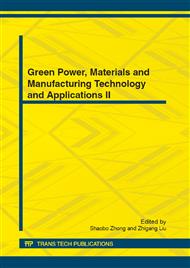p.343
p.348
p.353
p.361
p.366
p.370
p.375
p.381
p.386
Effect of Microbiological Additive on the Diversity of Microbial Community and the Dynamic Distribution during High-Temperature Composting Process
Abstract:
The objectives of this study were to analysis the differences of microbial community diversity between the microbial additives (MA) compost and natural compost and the distribution (spatial and temporal) of MA during high-temperature composting by PCR-DGGE technology. The results showed that the MA started temperature rapidly; prolonged the time of maintained high-temperature process and increased the diversity of microbial than natural compost. Sequence comparison revealed that the microorganisms most belonged to uncultivable, thermophilic bacteria. Bacillus became the dominant microorganisms after mixed with MA. MA were found in the top and middle portions of the compost throughout nearly the entire composting process,but absent in the natural compost. Our finding represents an important step towards the understanding of MA and its function in the degradation process of compost.
Info:
Periodical:
Pages:
366-369
Citation:
Online since:
November 2012
Authors:
Price:
Сopyright:
© 2012 Trans Tech Publications Ltd. All Rights Reserved
Share:
Citation:


